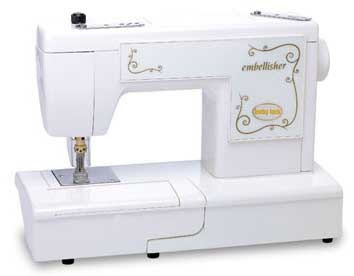Last year, we bought our oldest granddaughter a small sewing machine for her birthday and what a pleasure it continues to be, both for her and for me. She is only 6 (almost 7, as she reminds me) and so far the projects have been very simple - small bags and a line of Christmas bunting that ended up in her school classroom. She came to stay again last week for another installment during school half-term.
These visits always begin with a stop off in Cirencester on the way to our house so she can choose new fabric. She greatly enjoys this part of the process as the shop has a good selection of the brightly coloured quality cottons she likes and which seem to work well on her machine.
I believe most strongly that children beginning a hobby (which with luck may last a life-time) should be given appropriate good quality equipment as well as being taught the necessary skills in small bites. Good scissors were bought at Christmas and the particular skills I'd planned to share this time were pinning on a pattern and cutting it out carefully. I'd hoped we might progress to pinning and perhaps tacking together but the latter didn't happen at all - except by me (far too boring - I do agree) and much help was needed pinning pieces together. Those skills will be saved for another visit.
However, there was a great deal more practice with sewing in a straight line, helped by a line ruled / drawn with an air dissolving pen. She pursued this goal with great enthusiasm and concentration and by the end of her stay was stitching independently over short seams. I was sent away to make a cup of tea!
All this resulted in a brightly coloured cushion for her bedroom, a pyramid doorstop filled with lentils, which seemed to be a particular favourite, and a pencil roll to be given as a gift.
I've learnt to be ready to step in to help when she shows frustration and to stop for regular breaks. A tin of biscuits and other diversions are kept handy!
Sharing skills with her and seeing her delight is a wonderful and unexpected pleasure. I feel very, very lucky.
These visits always begin with a stop off in Cirencester on the way to our house so she can choose new fabric. She greatly enjoys this part of the process as the shop has a good selection of the brightly coloured quality cottons she likes and which seem to work well on her machine.
I believe most strongly that children beginning a hobby (which with luck may last a life-time) should be given appropriate good quality equipment as well as being taught the necessary skills in small bites. Good scissors were bought at Christmas and the particular skills I'd planned to share this time were pinning on a pattern and cutting it out carefully. I'd hoped we might progress to pinning and perhaps tacking together but the latter didn't happen at all - except by me (far too boring - I do agree) and much help was needed pinning pieces together. Those skills will be saved for another visit.
However, there was a great deal more practice with sewing in a straight line, helped by a line ruled / drawn with an air dissolving pen. She pursued this goal with great enthusiasm and concentration and by the end of her stay was stitching independently over short seams. I was sent away to make a cup of tea!
All this resulted in a brightly coloured cushion for her bedroom, a pyramid doorstop filled with lentils, which seemed to be a particular favourite, and a pencil roll to be given as a gift.
I've learnt to be ready to step in to help when she shows frustration and to stop for regular breaks. A tin of biscuits and other diversions are kept handy!
Sharing skills with her and seeing her delight is a wonderful and unexpected pleasure. I feel very, very lucky.






















